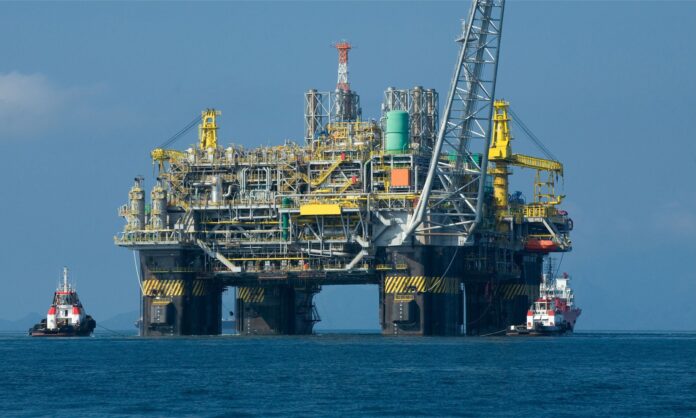Hydrographic Survey is the scientific discipline of surveying and measurement of physical features that impact aquatic structures, marine biology, structural design, coastal construction, offshore oil research/exploration and other related activities. Hydrographic Survey is an important aspect of offshore energy exploration as it assists the exploration for oil. It also assists in mineral survey. This specialized knowledge enhances the productivity, safety and profitability of oil exploration. It also provides data for hydrographic and structural engineering planning.
“To meet the growing global demand for offshore energy, through traditional oil & gas and more increasingly with renewables such as wind, wave and solar energy, hydrographic surveys are essential to map out new locations, conduct exploratory drilling and sampling, and provide spatial information essential in the design, installation and operations of the accompanying infrastructure,” affirms Gaynor Deacon of Amaza Survey Services. She adds that, Hydrographic surveyors map the seafloor and coastlines to determine possible obstructions and physical features to mitigate risk to equipment, vessels, cables and pipelines by using technology such as multibeam bathymetry, seismic systems, magnetometers and side-scan sonar. “Increasingly we are seeing LiDAR bathymetry being used in shallower coastal zones. In my opinion, there is no other way but to install hydrographic systems to surface survey vessels, underwater vehicles or unmanned platforms in the offshore marine environment to get accurate reliable spatial information of an inaccessible surface,” she emphasizes.
Hydrographic Survey involves the use of specialized surveyors, survey equipment, surveys, charting instruments, computer databases, computers and software programs. Hydrographic survey operations and software are usually performed using computers in order to create comprehensive, accurate topographic maps. These maps show different aspects of the earth’s surface like land surfaces, coastline, water surfaces and insides. The accuracy and details required makes this field very demanding in terms of time investment.
Nonetheless, according to Gaynor Deacon of Amaza Survey Services, Hydrographic surveying is broken down into different component parts – e.g. the planning, preparation, mobilisation, installation, execution and finally processing, interpretation and reporting. Each stage requires a lot of focus and attention to details, and at each stage there are quality control and assurance steps which need to be considered to ensure a professional, accurate and relevant final product. “Improvements in technology have streamlined many processes and enhanced the survey equipment, but in turn this has exponentially increased the need for better computing power, satellite communications and storage space,” says Gaynor. “With experience, each stage gets quicker and more efficient – but it is always a full time operation – often performed by a team of specialists on a 24/7 basis. By employing the right team of people and equipment, with experience and expertise, surveys can be completed effectively and efficiently, and meet project deliverables on time and within budget,” she elaborates.
Hydrographic Survey is carried out to study various phenomena associated with tides, currents, weather conditions, mountain ranges, volcanoes, and faults and the movement of tectonic plates. These studies are used by structural engineers for building marine structures, seaports, dams, pipelines, and hydroelectric power stations. In addition, coastal surveys are carried out to study various features like estuaries, bays, coasts and channels. Coastal surveys provide information about the land boundaries, lagoons, coves and bays of coastal areas. Coastal surveys help in the construction of canals, dikes, locks, fences, septic tanks, and even electrical wiring.
Hydrographic Survey is conducted to study present land topography, land elevations, coastal areas, water depths, and the distribution of topography features like cliffs, ridges, plains, oceans, lakes and ponds. This survey is also known as ocean survey. This specialized field includes an analysis, identification, recording, and interpretation of physical properties of terrestrial materials underlying the earth surface within navigable waters. Hydrographic surveying is one of the three basic specialized fields of cartography. All other forms of cartography use different types of surveying instruments.
Surveys have been undertaken to study natural phenomena such as currents, incline, volcanoes, earthquakes, continental drift, and ice-cap changes. Hydrographic surveys have been successful in obtaining reliable and accurate data regarding terrestrial and ocean floor dynamics. These studies have provided valuable information for building navigation and transportation systems. Nautical charts are prepared after the surveys have been completed to serve as a guide for boating and marine vessels.
“Reliability and accuracy of a survey system is directly related to the standard of the survey equipment being used, the experience and knowledge of the operator, the application of control and corrections (for example RTK or satellite-based), the quality and configuration of the installation, correctly measured offsets and lever arms, and finally undertaking calibrations, patch tests and other quality assurance and quality control procedures,” says Gaynor. She further points out other factors such as local environmental factors and weather conditions can be considered and their impact mitigated by applying basic seamanship knowledge and boat handling skills. Once the surveyor is satisfied he has the best setup and is running lines in the most optimal manner, its then a matter of keeping the systems running on clean uninterrupted power whilst acquiring the data on a computer with sufficient computing power, graphics and storage space.
“Your survey will only ever be as accurate or as reliable as the weakest link in the chain,” she concludes.
Hydrographic surveys have been used since the early days of exploration to map the sea floors. This method was adopted by the French, British, and American Navy. During the early years, navigational charts were created based on sound measurements of water depths. With the advancement in technology, more sophisticated tools and equipment are now using to collect data. These modern survey instruments to gather data points by using a variety of techniques such as sound waves, reflectors, and electronically triggered sound detectors.



